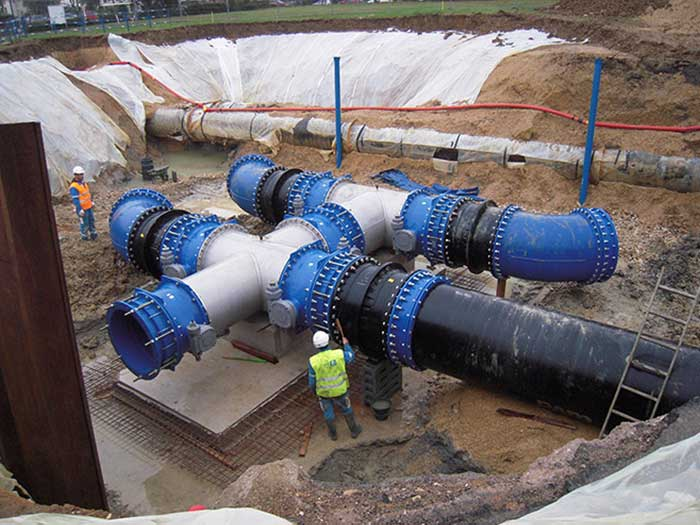Precautions for butterfly valve installation.

Precautions for butterfly valve installation:
1.In winter construction, water pressure test is carried out on butterfly valve under sub-zero temperature.
Possible consequence: due to the rapid freezing of the tube in the water pressure test, the tube is frozen.
The correct method: try to do a hydrostatic test on the butterfly valve before the winter. After the pressure test, all the water inside and outside the butterfly valve should be cleaned to prevent the winter butterfly valve from freezing.
If it is necessary to do water pressure test in winter, it needs to be carried out indoors and in a temperature range above zero. Similarly, water should be removed after the pressure test.
2.The flanges of the butterfly valve are replaced by the flanges of ordinary butterfly valves.
Possible consequences: Because the size of the flange of the butterfly valve is not the same as the flange size of the ordinary butterfly valve, the valve of the butterfly valve is relatively large. If the inner diameter of the flange is too small, the opening and closing of the butterfly valve will be affected, and the butterfly valve cannot be opened properly. The final damage to the butterfly valve. Measures:
The correct method is to machine the flange plate and install it according to the actual size of the butterfly valve flange.
3.The installation method of the butterfly valve is wrong, for example, the installation direction is incorrect, and the installation is not performed in the direction indicated by the instructions of the butterfly valve.
Possible consequences: The operation of the butterfly valve fails, opening and closing is difficult, maintenance is troublesome, and the valve body seal leaks.
Correct method: When installing the butterfly valve, it is necessary to install the butterfly valve in strict accordance with the installation instructions of the butterfly valve. After the installation is completed, do a check in the control manual.
4.Installation of butterfly valves, specifications and models do not meet the design requirements.
Possible consequences: Affect the normal use of the butterfly valve, or even cause damage to the butterfly valve, causing a loss.
The correct method: Before installing the butterfly valve, it is necessary to fully understand the working conditions of the construction environment. At the same time, you must be familiar with the application range of various butterfly valves and select the type and specification of the butterfly valve according to the working conditions.
5.Before the installation of the butterfly valve, the butterfly valve was not checked for quality in accordance with regulations.
Possible consequences: The quality inspection of the butterfly valve is not carried out, resulting in the installation of unqualified butterfly valves on the pipeline. The possibility of leakage of the pipeline increases and the potential safety hazards in the production work are also increased.
Correct method: Before the butterfly valve is installed, it is necessary to carry out strict quality inspection on the butterfly valve. It is advisable to test 10% of the total number of the butterfly valves in each batch to ensure that the butterfly valve meets all national standards.
